Common Name(s): Northern white cedar, eastern arborvitae
Scientific Name: Thuja occidentalis
Distribution: Northeastern North America
Tree Size: 50-65 ft (15-20 m) tall,
1.3-2 ft (.4-.6 m) trunk diameter
Average Dried Weight: 22.0 lbs/ft3 (350 kg/m3)
Specific Gravity (Basic, 12% MC): 0.29, 0.35
Janka Hardness: 320 lbf (1,420 N)
Modulus of Rupture: 6,500 lbf/in2 (44.8 MPa)
Elastic Modulus: 800,000 lbf/in2 (5.52 GPa)
Crushing Strength: 3,960 lbf/in2 (27.3 MPa)
Shrinkage: Radial: 2.2%, Tangential: 4.9%,
Volumetric: 7.2%, T/R Ratio: 2.2
Color/Appearance: Heartwood is light reddish brown. Relatively narrow sapwood is nearly white and isn’t always sharply or clearly demarcated from the heartwood. Numerous small pin knots are not uncommon in some pieces—especially in wood harvested from smaller ornamental trees.
Grain/Texture: Grain is usually straight; fine, even texture with moderate natural luster.
Rot Resistance: Rated as durable to very durable regarding decay resistance; also resistant to termites and powder post beetles.
Workability: Good overall working characteristics, and works easily with both hand and machine tools. However, the wood is both soft and weak, giving it poor screw-holding capabilities. It also tends to sand unevenly due to the difference in density between the earlywood and latewood zones. Glues and finishes well. Holds paint well.
Odor: Northern white cedar has a distinct (though comparatively mild) cedar-like smell when being worked.
Allergies/Toxicity: Although severe reactions are quite uncommon, northern white cedar has been reported to cause skin irritation, runny nose, as well as asthma-like symptoms. The wood contains plicatic acid (so-named from the related species, Thuja plicata), which has been shown to cause occupational asthma in cases of prolonged exposure to wood dust.[1]Cartier, A., Chan, H., Malo, J. L., Pineau, L., Tse, K. S., & Chan-Yeung, M. (1986). Occupational asthma caused by eastern white cedar (Thuja occidentalis) with demonstration that plicatic acid … Continue reading See the articles Wood Allergies and Toxicity and Wood Dust Safety for more information.
Pricing/Availability: Generally available in smaller sizes of lumber, usually processed for exterior purposes such as fence posts, shingles, etc. Prices should be in the mid range for a domestic softwood.
Sustainability: This wood species is not listed in the CITES Appendices, and is reported by the IUCN as being a species of least concern.
Common Uses: Fences, posts, shingles, piles, canoes, outdoor furniture, railroad ties, and paper (pulpwood).
Comments: In tree form, Thuja occidentalis is commonly referred to as eastern arborvitae—or simply just arborvitae—and is widely used as an ornamental tree, with hundreds of different cultivars in existence.
Perhaps the closest thing to balsa in the United States or Canada, northern white cedar is one of the very lightest and softest of commercially available domestic woods. Though despite the wood’s extreme softness and low strength, it’s valued for its resistance to decay, lending it to many exterior applications.
Images: Drag the slider up/down to toggle between raw and finished wood.
Identification: See the article on Softwood Anatomy for definitions of endgrain features.
Resin canals : absent
Tracheid diameter : small to very small
Earlywood to latewood transition : gradual
Grain contrast : moderate
Parenchyma : zonate
Lookalikes/Substitutes: Another cedar with similar appearance, anatomy, and overlapping geographic distribution is Atlantic white cedar (Chamaecyparis thyoides), and both are sometimes referred to more generically as eastern white cedar. Although northern white cedar tends to have less consistent zonate parenchyma (Atlantic white cedar tends to have more abundant and consistent zonate parenchyma), this feature is variable and observations can be ambiguous. Being in the Thuja genus, northern white cedar has a pungent, pencil-like odor that resembles a milder version of Thuja plicata, while the odor of Atlantic white cedar has a sweeter character.
Notes: Although western red cedar (Thuja plicata) is the most closely related North American species, the two are usually quite easy to tell apart—as the common names imply, one species (T. plicata) has reddish-brown heartwood while the other (T. occidentalis) is pale brown to nearly white.
Related Content:
References[+]
| ↑1 | Cartier, A., Chan, H., Malo, J. L., Pineau, L., Tse, K. S., & Chan-Yeung, M. (1986). Occupational asthma caused by eastern white cedar (Thuja occidentalis) with demonstration that plicatic acid is present in this wood dust and is the causal agent. Journal of allergy and clinical immunology, 77(4), 639-645. |
|---|

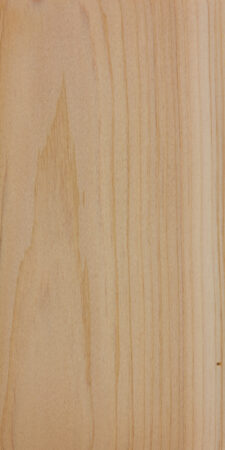
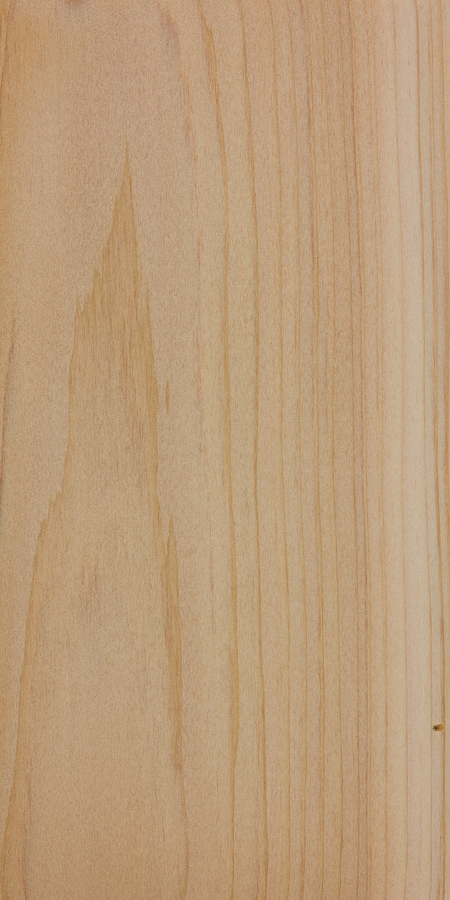
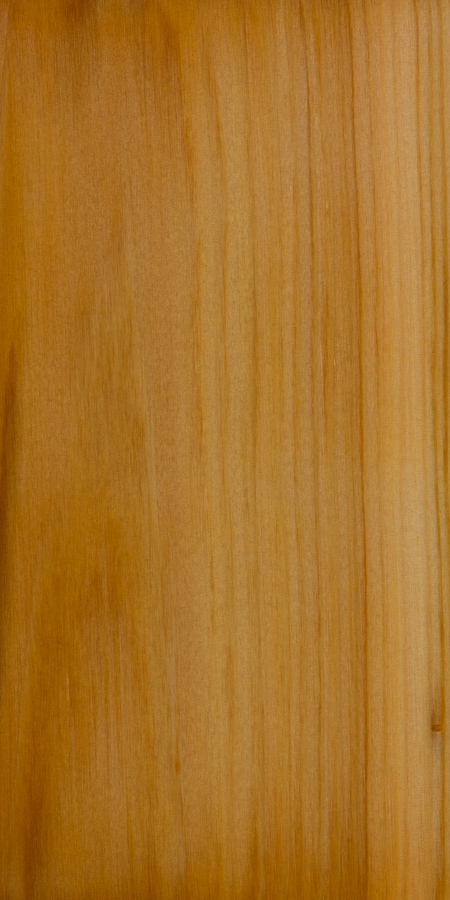
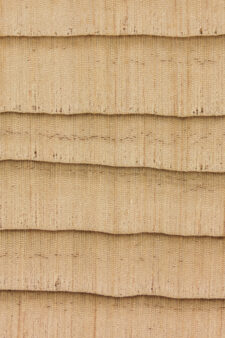

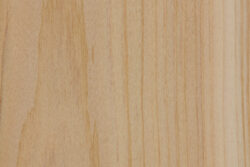
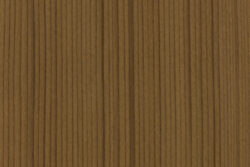
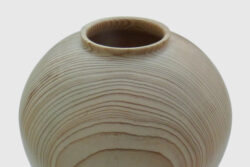


It would seem worth noting that northern white cedar tends to avoid splintering, a great advantage in some applications to which it has been put such as children’s playsets.
Sold as sinker curly cypress, odd saw dust, seems wet but moisture meter says 0.0%
Bald cypress can have a sort of greasy feel, even when fully dry, so that is probably what you are experiencing with the “wet” saw dust.
Thanks, I believe you are right, sandpaper clogs very quickly also. .Using it to build a canoe.
Can anyone compare and contrast Northern White Cedar and cypress for flexibility and weight?
Bald cypress (Taxodium distichum) varies a lot depending on growth rate, I believe. The old stuff was pretty dense, over 40 lbs/cu ft., about the same as loblolly pine. Stiffness was pretty good, but not quite as stiff as yellow pine or spruce. Hardness about the same as most Southern yellow pine, and a similar clear difference between early-wood and late-wood. Northern White Cedar (Thuja occidentalis), often called “arborvitae” especially in horticulture where it is often found in ornamental cultivars, is the East-Coast cousin of the giant Western Red-cedar (Thuja plicata) and there’s some similarities. Both are very light weight,… Read more »
I sanded a small white cedar table without a mask. Dumb, I know. What’s worse is I already have allergies and minor asthma. And what’s even worse is, the table had a Minwax coating on it. I didn’t put a mask on because I only planned on a slight sanding, maybe 10 seconds on top. Once I realized I didn’t like the job I did, I decided to sand it and remove the thin coating. It was dry, as I had put that on about a week before. It was a tiny side table to go with some adirondack chairs.… Read more »
Is the table still around? I had to remove some western red cedar from my bedroom because the slight aroma from it all night was triggering asthma. I think it’d be best to try to open some windows (if you sanded it inside) and dust off all surfaces and try to expel/exchange as much of the inside air as possible. If you look up Bill Pentz website on wood dust, he explains how wood dust can stay airborne and get stirred up long after you’ve done the initial work on the wood.
Yes, the table is an outdoor table. It’s not red cedar, but white. I think red is even worse, thanks.
Those are reasonable guesses. Unfortunately for softwoods like this, I would really need to see a finely sanded closeup picture of the endgrain to tell more information.
Thank you Eric. I don’t think I can sand any of it
We just bought a picnic table made of Northern White Cedar. I have allergies and asthma, and being near the table makes it hard for me to breathe. Will this be less of a problem if we stain it and seal it?
Probably, but a lot depends on your level of sensitivity. I would also recommend sealing all surfaces, not just visible ones. So table leg bottoms, undersides, etc.
Vicki the furniture top does look a bit like northern white cedar, but it is an exceptionally soft wood for a piece of furniture. It also can have many small knots. Also very lightweight so see if weighs less than a typical chest of drawers for its size. If it was built in the northeast maybe they used that wood locally. Wood hardness can be tested with a fingernail. Northern white cedar will dent easily. Tulip poplar will dent. Soft maple and the softer birches barely. And hard maple (including black) and the harder birches generally will not. Also northern… Read more »
Can you tell me if this is cedar – if not, any ideas what it is?
Thanks
I don’t think it’s cedar, as it would be a rather soft wood to use for an interior piece of furniture. Most likely candidates based on picture would be birch or maple.
Thanks. I’ll have a look :)
I’ve done a close up of the top.
I’m thinking black maple?
Is it possible to get a closeup picture of the end grain? That would give the most clues.
If i use this as panneleing in my cottage will ir smell nice like red cedar will?
There are two types of “red cedar” common in the US, western and eastern. Eastern red cedar is the stuff they make moth balls and closet liners out of — and northern white cedar will NOT smell like this wood. Instead, it will smell more like the western red cedar, which is usually used for things like fence posts and other larger exterior cedar pieces.
Do I need to strip the bark to use it as pergola poles? I am planning on repurposing large poles that were cut late August to make the pergola in upstate New York.
Jen, it depends on what type of playset you mean. It would probably be fine for the bigger log-type playsets with carriage bolts to hold the frame pieces together.
Is this good wood to build a playset out of? Reading the description, it doesn’t seem like it.
jen im sure you’ve moved on long ago, but in case anyone else finds your question here like I did, i hope this answer will be helpful. White Cedar is good for fence posts and strip planking for small boats, because its light and bends easy and doesn’t rot in the weather . .When its used for boats it needs to be sheathed in fiberglass or double planked to make it strong enough .I wouldn’t use it to to hold up your kids because theres better stuff..use “yellow wood” , southern yellow pine ..you can get it anywhere. its strong… Read more »